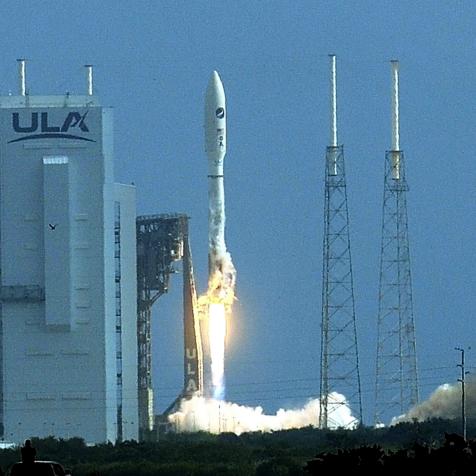
NASA Goddard
Astronomers May Have Found a Rare “Free-Floating” Black Hole

How do you see a perfectly black object in the middle of a pitch-dark night? It sounds like the start of an annoying riddle, but it’s really the question faced by astronomers when they want to search for black holes.
Recently, a team of astronomers may have found a solo-roaming black hole using a weird trick of gravity called microlensing, but the results still have to be confirmed.
Sometimes it’s tough being an astronomer. Nature likes to hide the most interesting things from easy observation. Take, for example, black holes. Except for the strange quantum phenomenon of Hawking radiation (totally a separate article), black holes are completely black. They don’t emit a single bit of radiation – they only absorb, hence their name.
To date, the only way astronomers have been able to spot black holes is through their influence on their environments. For example, if an orbiting star gets a little too close, the black hole can suck down the gas from that star, causing it to heat up as it falls to its doom. We can see the light from that death spiral. Or we can watch as stars dance around the giant black hole at the center of the Milky Way – we don’t see the monster itself, just the orbiting stars.
Even the famed “pictures” of the black holes in the center of the Milky Way and the M87 galaxy aren’t photographs of the black holes themselves. Instead, they’re radio images of all the material surrounding them (with a gap in the middle where the black hole is absorbing all the light).
But surely not all black holes have other light-emitting objects around them to help us find them. To find these ronin, astronomers have tried their luck with microlensing. We know that heavy objects can bend the path of light around them. This is a prediction of Einstein’s general theory of relativity, and the slight bending of starlight around our own Sun was one of the first successful tests of the theory.
NASA, ESA, and D. Coe, J. Anderson, and R. van der Marel (STScI)
Microlensing is pretty much what the name suggests. When astronomers get extremely lucky, a wandering black hole and pass between us and a random distant star. The light from that star bends around the black hole because of its gravity, and from our point of view, the star will appear to temporarily flare in brightness.
And when I say “extremely lucky” I mean it. Despite trying this technique for over a decade, it took until now for astronomers to find a candidate black hole through microlensing.
And it may not even be a black hole.
Two teams used the same data, a microlensing event recorded from both the OGLE (Optical Gravitational Lensing Experiment) telescope in Chile and the MOA (Microlensing Observations in Astrophysics) telescope in New Zealand. One team found that the mass was somewhere around seven times the mass of the Sun – definitely black hole territory. But the other team estimated a much smaller mass, around 2-4 times the mass of the Sun. If the true mass of the object is at the lower end of that spectrum, then the interloper is likely a neutron star, rather than a black hole.
Dive Deeper into the Universe
Journey Through the Cosmos in an All-New Season of How the Universe Works
The new season premieres on Science Channel and streams on discovery+.
Either way, microlensing is a cool technique sure to reveal many wonders of the (mostly dark) universe around us.




















